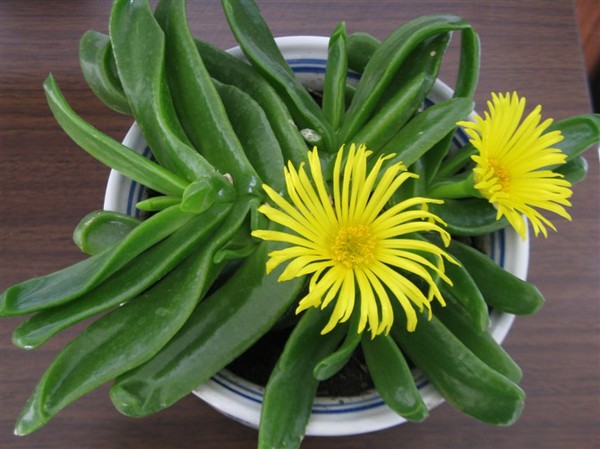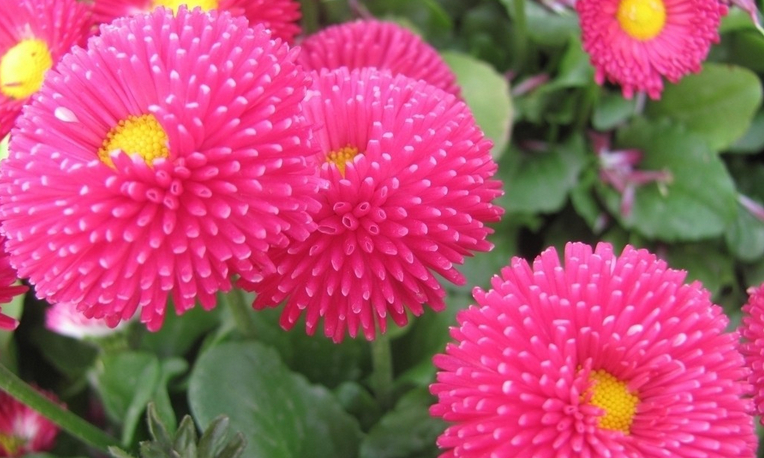Winter management and pruning and shaping of pelargonium
Geraniums like temperature and are afraid of cold. Special attention should be paid to preventing cold and freezing in winter. When raising geraniums in the northern region, the pot plants should be moved indoors and placed in front of sunny windows when Frosts Descent arrives, so that they can fully receive the light. If there is not enough light, the plant is easy to grow, affecting the formation of flower buds, and even the formed buds will wither due to lack of light.
If you are in the south, you should also move the potted plants to the place of shelter from the wind and keep warm to the sun after the Beginning of Winter, which is convenient for potted flowers to bask in the sun and avoid the cold. The indoor temperature should be kept at 15 degrees Celsius to 20 degrees Celsius daily and not less than 10 degrees Celsius at night. In the environment where the temperature is too low, the plant growth is weak, which is not conducive to flower bud differentiation, flowering less, or even no flowering, but the temperature higher than 25 degrees Celsius is also disadvantageous to its growth and flowering. Geraniums like drought and are afraid of dampness, so they should be watered properly every day in winter, even in dry weather. Even in dry weather, it takes five to seven days to water, and keep the basin soil dry and slightly wet.

Geraniums are widely planted flowers, leaves and ornamental flowers in the family, and they are also good materials for arranging flower beds and flower paths. Because of its rapid growth, it is trimmed and reshaped every year. Plants are generally pruned at least three times a year. The first time in March, mainly thinning branches; the second time in May, cut off the withered flowers and overdense branches; the Beginning of Autumn after the third pruning, mainly plastic surgery. How to prune and shape the plant? Generally speaking, after the summer day, the weather turns cool, the geranium gradually returns to growth, and the new buds of dormant plants have grown. At this time, it is from late August to early September, that is, a comprehensive pruning of the plant should be combined with changing pots. According to the growth of the plant, 3-5 main branches with strong growth and symmetrical distribution near the base are generally selected, and other overdense and slender overgrown branches are cut off from the base. Then the main branches and side branches were cut short, and each side branch only left strong immortal buds, so that the branches of the whole plant were evenly distributed, compact and plump and sturdy. The plants cultured for one year can be cut short in the appropriate position. It takes some time for the pruned and reshaped plants to regain their growth. Generally wait for the cut to dry for half a month, you can begin to apply fertilizer normally, in order to constantly sprout new buds and blossom one after another. In order to avoid excessive overgrowth, heart-picking can be carried out to promote multiple lateral branches to blossom. Introduction to the winter management and pruning and shaping methods of geranium, geranium, alias hydrangea, stone red, red red, sunflower, belongs to the pediatric family, including about 230 species of perennial fleshy, subshrub or shrub plants. Geraniums are native to southern Africa and are widely cultivated all over the world. Nowadays, more and more flower friends begin to come into contact with geranium planting. at present, flower friends are most worried about the winter and the methods of pruning and plastic surgery. Geraniums like temperature and are afraid of cold. Special attention should be paid to preventing cold and freezing in winter. When raising geraniums in the northern region, the pot plants should be moved indoors and placed in front of sunny windows when Frosts Descent arrives, so that they can fully receive the light. If there is not enough light, the plant is easy to grow, affecting the formation of flower buds, and even the formed buds will wither due to lack of light. If you are in the south, you should also move the pot plants to the place of shelter from the wind and keep warm in the sun after the Beginning of Winter, which is not only convenient for potted flowers to bask in the sun, but also easy to avoid the wind and cold. The indoor temperature should be kept at 15 ℃ to 20 ℃ per day and not less than 10 ℃ at night. In the low temperature environment, the plant growth is weak, which is not conducive to flower bud differentiation, flowering less, or even no flowering, but the temperature higher than 25 ℃ is also disadvantageous to its growth and flowering. Geraniums like drought and are afraid of dampness, so they should be watered appropriately every day, even in winter. Even in dry weather, it is usually necessary to water once every five to seven days to keep the basin soil dry and slightly wet. Too much watering will cause the leaves to yellowing and fall off, thus affecting flowering, and even causing rotting roots and death. However, the foliar surface is often sprayed with water to keep the foliar surface clean, which is conducive to photosynthesis. If you want to make the geranium blossom continuously, you need to provide sufficient nutrients. Generally, you should apply dilute liquid fertilizer every 10 days or so, which can be mixed with bean cake, hoof slices and fishy water, and can be used by adding water after fermentation. you can also use the compound fertilizer sold in the florist, using only 3 to 5 pieces at a time. There are many branches of Pelargonium. In order to promote its multi-flowering, it is necessary to pick the heart of the plant many times to promote its multi-branching and multi-pregnant buds. After shedding the flowers, cut off the residual flowers in time, cut off the too dense or thin branches, so as not to consume nutrients. However, in the depths of winter, it should not be cut again. Geraniums are widely planted flowers, leaves and ornamental flowers in the family, and they are also good materials for arranging flower beds and flower paths. Because of its rapid growth, it is trimmed and reshaped every year. Plants are generally pruned at least three times a year. The first time in March, mainly thinning branches; the second time in May, cut off the withered flowers and overdense branches; the Beginning of Autumn after the third pruning, mainly plastic surgery. How to prune and shape the plant? Generally speaking, after the summer day, the weather turns cool, the geranium gradually returns to growth, and the new buds of dormant plants have grown. At this time, it is from late August to early September, that is, a comprehensive pruning of the plant should be combined with changing pots. According to the growth of the plant, 3-5 main branches with strong growth and symmetrical distribution near the base are generally selected, and other overdense and slender overgrown branches are cut off from the base. Then the main branches and side branches were cut short, and each side branch only left strong immortal buds, so that the branches of the whole plant were evenly distributed, compact and plump and sturdy. The plants cultured for one year can be cut short in the appropriate position. It takes some time for the pruned and reshaped plants to regain their growth. Generally wait for the cut to dry for half a month, you can begin to apply fertilizer normally, in order to constantly sprout new buds and blossom one after another. In order to avoid excessive overgrowth, heart-picking can be carried out to promote multiple lateral branches to blossom. Conclusion: the above is the introduction of geranium winter management and pruning and shaping methods. I hope it will be helpful to the flower lovers who grow geranium.
- Prev

The cultivation of Buddha's palm
Buddha palm is a perennial herb, which opens in the sunny afternoon and closes at night, so that the day opens and the night closes for about 7 days. In case of rainy days or insufficient light in the cultivation place, it is difficult to open. It can be illuminated by human light and will open normally. Plants are cross-pollinated. Plants of bergamot are easy to grow in groups.
- Next

Culture methods and matters needing attention of Qianrihong
Cultivation requirements Qianrihong is not strict on the environment, but the sex likes the sun, hot and dry climate, strong, resistant to pruning, pruning after flowering can sprout new branches and continue to bloom. Like loose and fertile soil, not cold-resistant, heat-resistant, afraid of stagnant water, the suitable temperature for growth is 20 ~ 25 degrees Celsius
Related
- Fuxing push coffee new agricultural production and marketing class: lack of small-scale processing plants
- Jujube rice field leisure farm deep ploughing Yilan for five years to create a space for organic food and play
- Nongyu Farm-A trial of organic papaya for brave women with advanced technology
- Four points for attention in the prevention and control of diseases and insect pests of edible fungi
- How to add nutrient solution to Edible Fungi
- Is there any good way to control edible fungus mites?
- Open Inoculation Technology of Edible Fungi
- Is there any clever way to use fertilizer for edible fungus in winter?
- What agents are used to kill the pathogens of edible fungi in the mushroom shed?
- Rapid drying of Edible Fungi

